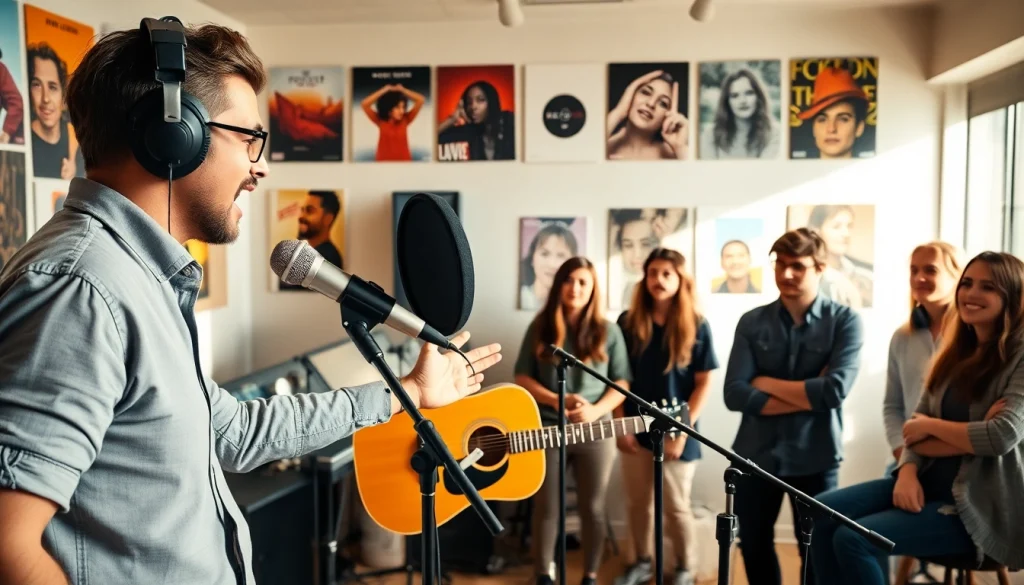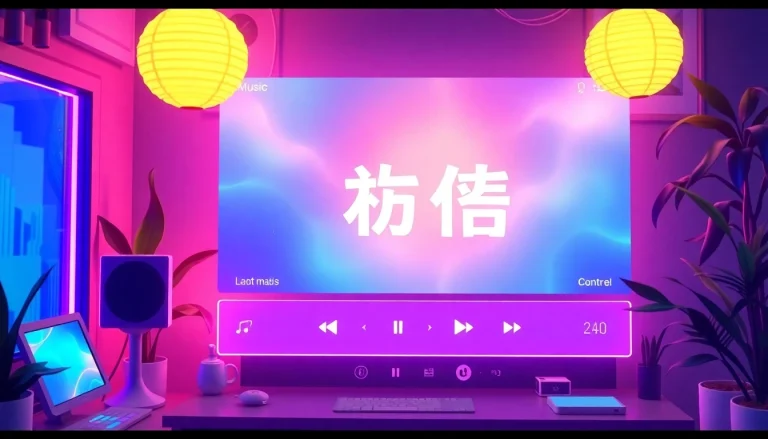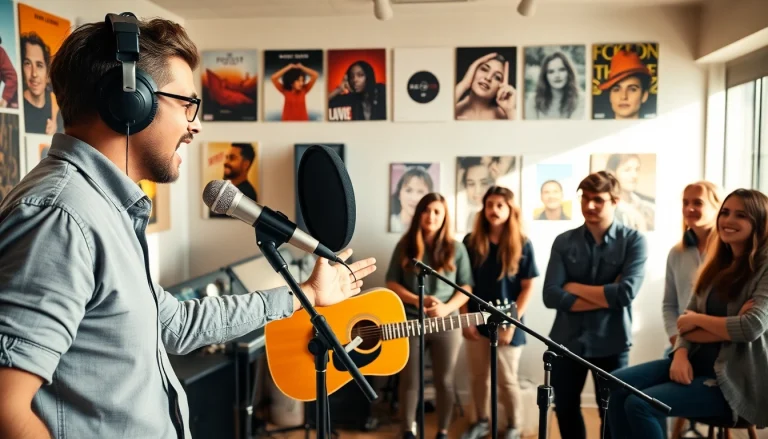
Introduction to Music Pitching
In an increasingly crowded music landscape, getting your tracks noticed requires more than just talent; it requires strategy. Music pitching has become an essential skill for artists and songwriters alike, enabling them to present their work effectively to key players in the music industry. From playlist curators to music blogs, understanding how to craft a compelling pitch can be what separates an artist from the swathes of emerging talents.
What is Music Pitching?
Music pitching is the process of presenting your music to industry professionals or platforms—such as playlist curators, radio stations, music blogs, and record labels—with the aim of gaining exposure, airplay, or representation. The goal is to effectively communicate the value and appeal of your music to generate interest and result in opportunities for promotion or monetization.
The Importance of Effective Pitching
In a world where hundreds of thousands of new tracks are uploaded daily, standing out can feel daunting. Effective pitching allows artists to:
- Build Relationships: Regular pitching to relevant contacts can create a network of valuable industry relationships.
- Increase Visibility: Well-crafted pitches can help get your music featured, leading to increased plays, followers, and ultimately, revenue.
- Clarify Artistic Vision: The pitching process forces artists to articulate their music’s unique qualities and story, refining their artistic brand in the process.
Common Misconceptions
There are several misconceptions about music pitching that can hinder artists:
- Many believe that simply sending their music to various contacts will get them noticed, overlooking the importance of a tailored approach.
- Some think pitching is solely about getting on playlists, ignoring other valuable opportunities like blog features and publicity.
- There’s a misconception that only established artists can successfully pitch, when in fact many new, independent artists have successfully utilized effective pitching strategies.
Understanding the Music Industry Landscape
Key Players in Music Pitching
Understanding who the key players in music pitching are is vital for successful outreach:
- Playlist Curators: These individuals or entities are critical for getting music heard. They curate playlists on platforms like Spotify, Apple Music, and YouTube.
- Music Bloggers and Influencers: Blogs and social media influencers can create substantial buzz around a song, leading to greater exposure.
- Record Labels: Labels are interested in new talent to sign, and a well-crafted pitch can get you noticed by A&R representatives.
Trends Shaping Music Promotion
The music industry is always evolving; thus, being aware of current trends can enhance your pitching efforts:
- Playlists as Key Marketing Tools: The significance of playlists continues to rise. Getting on a popular playlist can dramatically increase plays and followers.
- Data-Driven Decision Making: Artists and labels now use analytics tools to understand audience demographics and make informed decisions about where to pitch.
- Social Media Integration: Platforms like TikTok and Instagram have transformed how new music is discovered and shared, facilitating new methods for artists to connect with audiences.
Competitive Analysis: Who to Watch
Knowing your competition is critical to refining your pitch. Observe how successful artists pitch their music. Take note of:
- Which playlist curators they target.
- The platforms they use for submissions.
- The narrative or story they convey about their music.
Utilizing competitive analysis can provide valuable insights that shape your pitching strategy.
Crafting Your Music Pitch
Essential Components of a Great Pitch
An effective pitch should include several core components:
- Personalization: Show your understanding of the recipient’s work. Reference their previous playlists or articles where your music might fit.
- Conciseness: Keep your pitch brief but impactful. Aim for clarity and do not overload with information.
- Visuals: Including high-quality images or videos can enhance your pitch. Engaging visuals attract more attention.
- Track Information: Provide details such as release dates, genre, and any notable collaborations or production credits.
Do’s and Don’ts of Music Pitching
To maximize the chances of a successful pitch, adhere to these do’s and don’ts:
Do’s
- Do research your targets thoroughly; customize each pitch accordingly.
- Do follow up politely if you haven’t heard back after a week or two.
- Do network and build genuine relationships in the industry.
Don’ts
- Don’t spam multiple contacts at once; it’s better to personalize each approach.
- Don’t ignore guidelines provided by curators or platforms regarding submissions.
- Don’t sound desperate; confidence can be key to garnering interest.
Examples of Successful Pitches
Learning from examples can guide your own pitches. For instance:
- A successful pitch might include a captivating story about the inspiration behind a song, drawing the curator into the music’s emotional journey.
- Highlighting previous music that garnered attention can lend credibility to your new release.
Consider visiting sites where artists share their experiences to refine your approach further and find inspiration.
Tools and Platforms for Music Pitching
Utilizing Social Media for Promotion
Social media platforms offer immense potential for artists looking to pitch their music. Utilize the following strategies:
- Engagement: Regularly engage with your audience through Q&As, live performances, and behind-the-scenes content.
- Targeted Ads: Use social media ads to target potential listeners and create buzz around a release.
- Collaborations: Partner with other artists for cross-promotion; leverage each other’s audiences for greater reach.
Music Submission Platforms
Several platforms can help streamline the music pitching process. A few notable examples include:
- SubmitHub: This platform allows you to submit your tracks to blogs, playlist curators, and influencers efficiently.
- Groover: Similar in concept, Groover connects artists with curators and music professionals looking for new material.
- Songtradr: A platform that helps artists monetize music placements across various media while providing pitching tools.
Networking Strategies to Enhance Your Reach
Building a robust network is essential for successful music pitching. Consider these strategies to connect with industry players:
- Attend Industry Events: Conferences, workshops, and showcases can provide invaluable networking opportunities.
- Engage in Online Communities: Participate in forums and social media groups focused on music promotion, where you can share experiences and gain insights.
- Leverage LinkedIn: Create a professional profile highlighting your music and connect with industry professionals.
Measuring Success in Music Pitching
Performance Metrics and KPIs
Tracking the efficacy of your pitch is crucial to understanding what works and what doesn’t. Consider monitoring these performance metrics:
- Response Rates: Measure how many pitches receive positive responses or requests for more information.
- Engagement Metrics: Track plays, shares, and comments on platforms where your music is featured after pitching.
- Follower Growth: Observe how your follower count changes over time after submitting pitches.
Adapting Your Strategy Based on Feedback
Feedback from industry professionals is invaluable. Use it to tailor your approach:
- Identify common themes in feedback that can help refine your music, pitch, or strategy.
- Adjust your target list based on who engages with your music positively.
Long-term Growth Through Effective Pitching
Successful music pitching can lead to sustainable growth and long-term career development. By consistently applying the techniques discussed, you’re building a solid platform to promote your music over time.
Persistent effort, adaptability, and a willingness to learn from both successes and failures will pave your way in the ever-evolving music industry landscape.






